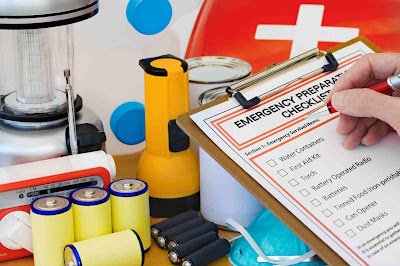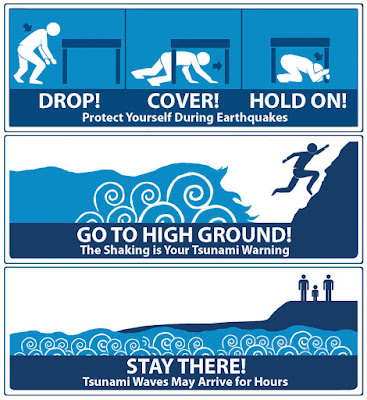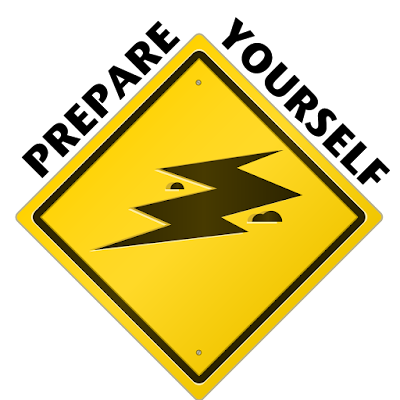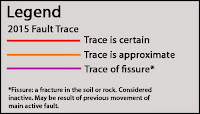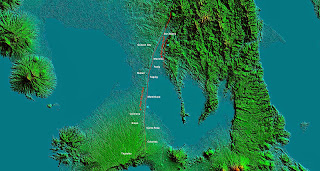Sometimes the good life is elusive and difficult to reach. Just...Eat. Read. Love. Pray. And prepare yourself and someday your chance will come. The Good Life! is the No. 1 and original hyperzine for Overseas Filipino Workers (OFW).
Monday
EMgoldex Español
República de las Filipinas
Departamento de Finanzas
Comisión de Valores y Bolsa (SEC)
SEC Bldg. EDSA, Greenhills, Mandaluyong City
ASESOR SEC
La Comisión de Bolsa y Valores ha recibido informes de que los internautas de Facebook están siendo invitados o atraídos a invertir su dinero en EMgoldex FILIPINAS '"Pinoy Style Patak Patak" de una promesa de grandes / altos rendimientos lucro donde una inversión de mil pesos ganará beneficios que van de cinco mil a diez mil pesos o una colocación de treinta y cinco mil rendirá Ciento ochenta mil a trescientos sesenta mil pesos (IK = 5K a 10K o 35K pago = 180K a 360K de pago).
Per verificación, Emgoldex Filipinas no es una empresa registrada o sociedad. Del mismo modo, dicha entidad no está autorizada para solicitar las inversiones por parte del público, ya que no consiguió el registro previo y / o licencia o permiso para solicitar inversiones de la Comisión según lo dispuesto en la Sección 8.1 del Código de Regulación de Valores.
En vista de ello, el público presente se aconseja para ejercer el autocontrol de invertir su dinero en esa institución de inversión de riesgo de rendimiento alto alto y que tome las precauciones necesarias para hacer frente a la entidad antes mencionado.
Si usted tiene alguna información sobre el funcionamiento de dicha entidad, por favor llame a la Ejecución y la Dirección de Protección del Inversor en los números de teléfono 584-7187 o 584 a 7652.
SCAM ALERT: EMgoldex Review
Presentación de Emgoldex Español, testimonio ganando 3255 euros en 2 meses
Departamento de Finanzas
Comisión de Valores y Bolsa (SEC)
SEC Bldg. EDSA, Greenhills, Mandaluyong City
ASESOR SEC
La Comisión de Bolsa y Valores ha recibido informes de que los internautas de Facebook están siendo invitados o atraídos a invertir su dinero en EMgoldex FILIPINAS '"Pinoy Style Patak Patak" de una promesa de grandes / altos rendimientos lucro donde una inversión de mil pesos ganará beneficios que van de cinco mil a diez mil pesos o una colocación de treinta y cinco mil rendirá Ciento ochenta mil a trescientos sesenta mil pesos (IK = 5K a 10K o 35K pago = 180K a 360K de pago).
Per verificación, Emgoldex Filipinas no es una empresa registrada o sociedad. Del mismo modo, dicha entidad no está autorizada para solicitar las inversiones por parte del público, ya que no consiguió el registro previo y / o licencia o permiso para solicitar inversiones de la Comisión según lo dispuesto en la Sección 8.1 del Código de Regulación de Valores.
En vista de ello, el público presente se aconseja para ejercer el autocontrol de invertir su dinero en esa institución de inversión de riesgo de rendimiento alto alto y que tome las precauciones necesarias para hacer frente a la entidad antes mencionado.
Si usted tiene alguna información sobre el funcionamiento de dicha entidad, por favor llame a la Ejecución y la Dirección de Protección del Inversor en los números de teléfono 584-7187 o 584 a 7652.
SCAM ALERT: EMgoldex Review
Presentación de Emgoldex Español, testimonio ganando 3255 euros en 2 meses
Categories:
List of Scams
Location:
Mexico
SCAM ALERT: EMgoldex Review
Republic of the Philippines
Department of Finance
Securities and Exchange Commission (SEC)
SEC Bldg. EDSA, Greenhills, Mandaluyong City
SEC ADVISORY
The Securities and Exchange Commission has received reports that Facebook netizens are being invited or enticed to invest their money in EMgoldex PHILIPPINES' "Pinoy Style Patak Patak" for a promise of huge profit/high returns where an investment of One Thousand Pesos will earn profits ranging from Five Thousand to Ten Thousand Pesos or a placement of Thirty Five Thousand will yield One Hundred Eighty Thousand to Three Hundred Sixty Thousand Pesos (IK = 5K to 10K payout or 35K=180K to 360K payout).
Per verification, Emgoldex Philippines is not a registered corporation or partnership. Likewise, such entity is not authorized to solicit investments from the public, as it did not secure prior registration and/or license or permit to solicit investments from the Commission as required under Section 8.1 of the Securities Regulation Code.
In view thereof, the public is hereby advised to exercise self-restraint from investing their money into such high yield-high risk investment scheme and to take the necessary precautions in dealing with the above-named entity.
Should you have any information regarding the operation of the said entity, please call the Enforcement and Investor Protection Department at telephone numbers 584-7187 or 584-7652.
SEC Philippines Advisory
Department of Finance
Securities and Exchange Commission (SEC)
SEC Bldg. EDSA, Greenhills, Mandaluyong City
SEC ADVISORY
The Securities and Exchange Commission has received reports that Facebook netizens are being invited or enticed to invest their money in EMgoldex PHILIPPINES' "Pinoy Style Patak Patak" for a promise of huge profit/high returns where an investment of One Thousand Pesos will earn profits ranging from Five Thousand to Ten Thousand Pesos or a placement of Thirty Five Thousand will yield One Hundred Eighty Thousand to Three Hundred Sixty Thousand Pesos (IK = 5K to 10K payout or 35K=180K to 360K payout).
Per verification, Emgoldex Philippines is not a registered corporation or partnership. Likewise, such entity is not authorized to solicit investments from the public, as it did not secure prior registration and/or license or permit to solicit investments from the Commission as required under Section 8.1 of the Securities Regulation Code.
In view thereof, the public is hereby advised to exercise self-restraint from investing their money into such high yield-high risk investment scheme and to take the necessary precautions in dealing with the above-named entity.
Should you have any information regarding the operation of the said entity, please call the Enforcement and Investor Protection Department at telephone numbers 584-7187 or 584-7652.
SEC Philippines Advisory
Categories:
List of Scams
Location:
Philippines
Download Top 32 Mad Max: Fury Road 2015 HD Desktop Wallpaper for iPhone, iPad, Android, Tablets and Laptop
Download our free top 32 Mad Max: Fury Road Wallpapers and Backgrounds and download them on all your devices, Computer, Smartphone, Tablet, iPad, iPhone and Android.
Best 750x1334 Mad Max Fury Road 2015 HD wallpaper for iPhone 6 Desktop Background, Standard 4:3 5:4 Full screen UXGA SXGA Wide 16:10 5:3 Widescreen WUXGA WXGA WGA HD 16:9 High Definition phone, tablet and laptop.
Mad Max: Fury Road is a 2015 Australian post-apocalyptic action film directed, produced, and co-written by George Miller. The fourth film of Miller's Mad Max franchise and the first film of the franchise in 30 years, Fury Road stars Tom Hardy as "Mad" Max Rockatansky, replacing Mel Gibson in the title role. Charlize Theron, Nicholas Hoult, and Hugh Keays-Byrne also star.
The film is set in a future desert wasteland where gasoline and water are scarce commodities, with Max (Hardy) joining forces with Imperator Furiosa (Theron) to flee from cult leader Immortan Joe (Keays-Byrne) and his army in an armored tanker truck, which leads to a lengthy road battle. The film had its world premiere on 7 May 2015 at the TCL Chinese Theatre. It began wide theatrical release on 14 May 2015, including an out-of-competition screening at the 68th Cannes Film Festival. Critics have praised the film for its acting, screenplay, action sequences, stunts, and direction.
(click to enlarge and download)
Best 750x1334 Mad Max Fury Road 2015 HD wallpaper for iPhone 6 Desktop Background, Standard 4:3 5:4 Full screen UXGA SXGA Wide 16:10 5:3 Widescreen WUXGA WXGA WGA HD 16:9 High Definition phone, tablet and laptop.
Mad Max: Fury Road is a 2015 Australian post-apocalyptic action film directed, produced, and co-written by George Miller. The fourth film of Miller's Mad Max franchise and the first film of the franchise in 30 years, Fury Road stars Tom Hardy as "Mad" Max Rockatansky, replacing Mel Gibson in the title role. Charlize Theron, Nicholas Hoult, and Hugh Keays-Byrne also star.
The film is set in a future desert wasteland where gasoline and water are scarce commodities, with Max (Hardy) joining forces with Imperator Furiosa (Theron) to flee from cult leader Immortan Joe (Keays-Byrne) and his army in an armored tanker truck, which leads to a lengthy road battle. The film had its world premiere on 7 May 2015 at the TCL Chinese Theatre. It began wide theatrical release on 14 May 2015, including an out-of-competition screening at the 68th Cannes Film Festival. Critics have praised the film for its acting, screenplay, action sequences, stunts, and direction.
(click to enlarge and download)
Categories:
Movie/Film
Location:
United States
Sunday
Earthquake Safety Tips in Hindi- के दौरान पहले और बाद घर के लिए भूकंप सुरक्षा उपाय
कितनी अच्छी तरह अपने घर में एक 5.0 भूकंप के दौरान क्षति विरोध करेंगे? एक 7.8 या अधिक से अधिक कैसे एक के बारे में है? अधिकांश घरों में आम तौर पर एक बड़ा भूकंप का सामना करने के सुदृढीकरण के कुछ प्रकार की आवश्यकता होगी।
इन सवालों का जवाब कुछ आप असहज या छोटे रिक्त स्थान में प्रवेश करने की जरूरत पड़ सकती है। इसके बजाय यदि आप अपने घर की जाँच करता है एक अनुभवी निरीक्षक या पेशेवर संरचनात्मक इंजीनियर या सक्षम वास्तुकार पास करने के लिए चाहते हो सकता है। आप जो कुछ भी पसंद है, अगले भूकंप के हमले से पहले यह करने के लिए कुछ समय लगेगा। यहाँ आप अपने घर को मजबूत करने के तरीके पर ध्यान केंद्रित करने में मदद मिलेगी कि एक सूची है।
भूकंप की तैयारियों टिप्स
आप दो अलग अलग तरीकों से, यह संशोधित करने, या यह retrofitting से अपने घर की रक्षा कर सकते हैं:
Nonstructural retrofits के कम लागत और मेहनत के साथ क्षति के खिलाफ अपने घर की सामग्री की रक्षा करना। Retrofits के उदाहरण में शामिल हैं:
क) पानी हीटर, बड़े उपकरणों, उम्दा, चित्रों और बुलेटिन बोर्ड हासिल करने, दीवार टीवी हासिल;
ख) कैबिनेट दरवाजे latching; और
ग) खिड़कियों पर सुरक्षा फिल्म का उपयोग कर। ज्यादातर मामलों में, आप एक इमारत की अनुमति की जरूरत नहीं होगी। यह हालांकि, अपने स्थानीय निर्माण विभाग से संपर्क करने के लिए सुनिश्चित करने के लिए एक अच्छा विचार है।
स्ट्रक्चरल retrofits के भूकंप गतिविधि का सामना करने के लिए एक मौजूदा इमारत की क्षमता बढ़ाने के लिए कि संशोधनों हैं। बढ़ी हुई भूकंप सुरक्षा चाहते हैं, लेकिन भवनों के अपने मौजूदा स्टॉक के पुनर्निर्माण के लिए पैसा नहीं दे सकते कि संगठनों के लिए, retrofits के एकमात्र विकल्प प्रदान कर सकता है। सबसे कमजोर इमारतों वे एक भूकंप के दौरान पतन की सबसे अधिक संभावना का सामना के बाद से unreinforced चिनाई (URM) कर रहे हैं। प्रौद्योगिकी आकलन के कार्यालय के अनुसार, URM भवनों के लिए retrofits के नए निर्माण के रूप में ज्यादा के रूप में एक औसत 23 प्रतिशत लागत। इस तरह के उच्च लागत के साथ सामना किया, कुछ भवन मालिकों के पुनर्निर्माण के लिए तय कर सकते हैं। हालांकि, कुछ संगठनों बस (23 प्रतिशत सस्ता की तुलना में 100 प्रतिशत है) के पुनर्निर्माण के लिए पैसा नहीं दे सकते।
यह बेहतर है एक भूकंप के बल सामना कर सकते हैं ताकि retrofits अपने घर की संरचना या कंकाल को मजबूत। अपने घर की संरचना एक भूकंप का विरोध करने के क्रम में एक साथ काम करना चाहिए, जो कई अलग अलग भागों, या घटकों, से बना है।
अपने घर की संरचना करने के लिए संशोधन काफी इसमें शामिल हो जाते हैं और आम तौर पर एक पंजीकृत डिजाइन पेशेवर (इंजीनियर, वास्तुकार या इमारत ठेकेदार) और अपने स्थानीय निर्माण विभाग की मंजूरी की विशेषज्ञता की आवश्यकता होती है। यदि आप जो देखते हैं के बारे में कोई प्रश्न या चिंता है, तो एक पेशेवर इंजीनियर या वास्तुकार से संपर्क करें।
भूकंप प्रतिरोधी इमारत के उद्देश्य को प्राप्त करने के लिए, डिजाइन निम्न मानक का पालन करना चाहिए:
1) नियमित रूप से आकार इमारत के
2) ऊँचाई कम से कम तीन बार चौड़ाई होना (एच <3 font="">
3) की लंबाई कम से कम तीन बार चौड़ाई होने के लिए (एल <3 font="">
4) लोड पथ सख्ती से खड़ी कोई ऑफसेट होना चाहिए अलग मंजिलों पर दीवार या स्तंभ पैरों के निशान के बीच की अनुमति दी जाए
5) चिनाई इमारतों में, दीवार की असमर्थित लंबाई प्रतिबंधित किया जाना चाहिए और दीवार पर्याप्त मोटाई होनी चाहिए
6) कम से कम तीन लोड असर चिनाई भवनों के लिए प्रत्येक दिशा में संरचनात्मक दीवारों
7) पार्श्व बलों विरोध करने के लिए भूकंपीय बैंड फाउंडेशन, कुर्सी, देहली, मसूर, और छत के स्तर पर चिनाई इमारतों के आसपास सभी रखा जाएगा। इस भूकंप के दौरान एक बॉक्स के रूप में अभिनय, अलग ओर्थोगोनल दीवारों से अखंडता प्रदान करता है
8) टांके के साथ कोनों और टी जोड़ों में चिनाई इमारतों के जोड़ों को मजबूत
9) पत्थर की चिनाई इमारतों के लिए नहीं कम से कम 2 फीट के अंतराल पर के माध्यम से पत्थर दें
10) एक दूसरे से सभी व्यक्तिगत तत्व बांधने से छत स्तर तक फाउंडेशन से इमारतों की संरचनात्मक अखंडता को सुनिश्चित
11) फंसाया संरचनाओं के लिए प्रत्येक दिशा में सही ग्रिड में कम से कम तीन स्तंभों प्रदान करें
12) 'मजबूत स्तंभ, कमजोर मुस्कराते हुए "के सिद्धांत का पालन करें
13) इस तरह के कॉलम और मुस्कराते हुए के रूप में संरचनात्मक तत्वों की पर्याप्त आकार प्रदान
14) सामग्री और कारीगरी की उच्च गुणवत्ता सुनिश्चित
15) किरण स्तंभ जोड़ों में समुचित का ब्यौरा बार और लंगर सुनिश्चित करें
16) उचित batching, मिश्रण रखकर, संकुचित, और कंक्रीट के इलाज सुनिश्चित करें
Related Post: Download Free Maps, No Registration, Click here, PHIVOLCS West Valley Fault Line Google Map
आप अपने और अपने परिवार सावधानियों के रूप में कई लेने के द्वारा एक भूकंप के दौरान नुकसान से बचने का एक बेहतर मौका होगा। लेकिन, इन चरणों का सिर्फ शुरुआत कर रहे हैं। के रूप में पूरी तरह से संभव के रूप में अपने आप को बचाने के लिए, यहाँ कुछ जोड़ा सुझाव हैं:
एक भूकंप हमलों से पहले ?: क्या करना है
1) एक मेज या मेज के नीचे "कवर" लेते हैं और जब एक भूकंप हमलों पर यह करने के लिए "पकड़" हर किसी के लिए "बतख" सिखाने या फर्श करने के लिए ड्रॉप। वाक्यांश याद रखें: "। बतख, कवर और पकड़ो"
2) प्राथमिक चिकित्सा और सीपीआर जानें।
3) एक साथ आम तौर पर कम से कम तीन दिवसीय नहीं प्रशीतन की जरूरत है कि पानी और भोजन पीने की आपूर्ति और, कोई खाना पकाने शामिल है कि एक आपातकालीन किट डाल; आपातकालीन खाना पकाने के उपकरण, यदि आवश्यक हो; एक पोर्टेबल एनओएए मौसम रेडियो; सहायता सामग्री और दवाओं के पहले; इस तरह के एक रिंच, एक टॉर्च और दस्ताने के रूप में बुनियादी उपकरणों,; पोर्टेबल लालटेन और बैटरी; क्रेडिट कार्ड और नकदी; बीमा पॉलिसियों सहित और महत्वपूर्ण दस्तावेजों,।
4) पता है। सभी वयस्क हैं और अपने परिवार के किशोर के सदस्यों को एक उपयोगिता बंद करने के लिए कैसे पता सुनिश्चित करें।
5) अपने समुदाय की आपदा तैयारियों की योजना के साथ परिचित हो और एक परिवार की योजना बनाते हैं। निकटतम पुलिस, आग और आपातकालीन चिकित्सा सुविधाओं स्थित हैं, जहां पता है।
6) अपने घर और पड़ोस से एक भागने मार्ग की योजना है और परिवार के पुनर्मिलन के लिए एक आपात बैठक जगह नामित। चिंतित रिश्तेदारों के साथ संवाद करने के लिए एक संपर्क बिंदु स्थापित करना।
7) समय-समय पर आपको एक आपदा के शिकार हैं, तो आप अपने घर और जीवन के पुनर्निर्माण के लिए पर्याप्त कवरेज है, सुनिश्चित कर लें कि आपके बीमा एजेंट या कंपनी के साथ अपने homeowner बीमा पॉलिसी की समीक्षा करें। ठेठ homeowner बीमा पॉलिसी भूकंप कवरेज शामिल नहीं है। आप एक भूकंप की आशंका वाले क्षेत्र में हैं, तो आप भूकंप बीमा की खरीद पर विचार करना चाहिए।
एक भूकंप के दौरान ?: क्या करना है
1) क्या आप घर के अंदर, "बतख, कवर और पकड़ कर रहे हैं" मिलाते हुए बंद हो जाता है जब तक हैं। कोशिश करते हैं और एक इमारत से बाहर चला मत करो - आप मलबा गिरने से मारा जा सकता है।
2) आप सड़क पर हैं, विद्युत लाइनों, पेड़ों और इमारतों से दूर, खुले में जल्दी से और सुरक्षित रूप से ले जाते हैं, और बंद करने के लिए झटकों के लिए प्रतीक्षा करें।
3) आप गाड़ी चला रहे हैं, तो ध्यान से और धीरे धीरे दूर यातायात से सड़क के किनारे पर एक रोकने के लिए अपने वाहन को ले आओ। आप पर या पुल के नीचे रोक नहीं है कि सुनिश्चित करें। बिजली लाइनों या गिर सकता है कि निकट सड़क के संकेत के तहत रोक नहीं है। झटकों के लिए बंद कर दिया जाता है, आप ड्राइविंग जारी रख सकते हैं। सड़क के लिए संभावित नुकसान के लिए ध्यान से देखो।
एक भूकंप के हमले के बाद ?: क्या करना है
1) ऐसी गैस या पानी लीक और बिजली शॉर्ट्स के रूप में खतरों, के लिए जाँच करें। क्षतिग्रस्त उपयोगिताओं को बंद कर दें। आग विभाग या गैस और बिजली कंपनियों के क्षेत्र सुरक्षित है पर जब वापस उपयोगिताओं बारी है।
2) चोटों के लिए जाँच करें और जरूरत के रूप में प्राथमिक चिकित्सा प्रशासन।
3) अपने भोजन और पानी की आपूर्ति की जाँच करें। बिखर कांच के पास खुले कंटेनरों से कुछ भी न खाएँ।
4) को सुनें और सलाह और आपातकालीन प्रबंधन कार्यालय, अग्निशमन विभाग और उपयोगिता कंपनियों सहित स्थानीय सहायता संगठनों की सिफारिशों का पालन करें।
5) सड़क और आपातकालीन इस्तेमाल के लिए स्पष्ट फोन लाइन रखें।
6) झटकों के लिए तैयार रहें।
Related Post: How to Apply for NBI Clearance Online 2015: Requirements for New Applicants, Renewal, For Abroad, Application Fees and NBI Branches List
Watch Video: Earthquake Safety Tips Video
इन सवालों का जवाब कुछ आप असहज या छोटे रिक्त स्थान में प्रवेश करने की जरूरत पड़ सकती है। इसके बजाय यदि आप अपने घर की जाँच करता है एक अनुभवी निरीक्षक या पेशेवर संरचनात्मक इंजीनियर या सक्षम वास्तुकार पास करने के लिए चाहते हो सकता है। आप जो कुछ भी पसंद है, अगले भूकंप के हमले से पहले यह करने के लिए कुछ समय लगेगा। यहाँ आप अपने घर को मजबूत करने के तरीके पर ध्यान केंद्रित करने में मदद मिलेगी कि एक सूची है।
भूकंप की तैयारियों टिप्स
आप दो अलग अलग तरीकों से, यह संशोधित करने, या यह retrofitting से अपने घर की रक्षा कर सकते हैं:
Nonstructural retrofits के कम लागत और मेहनत के साथ क्षति के खिलाफ अपने घर की सामग्री की रक्षा करना। Retrofits के उदाहरण में शामिल हैं:
क) पानी हीटर, बड़े उपकरणों, उम्दा, चित्रों और बुलेटिन बोर्ड हासिल करने, दीवार टीवी हासिल;
ख) कैबिनेट दरवाजे latching; और
ग) खिड़कियों पर सुरक्षा फिल्म का उपयोग कर। ज्यादातर मामलों में, आप एक इमारत की अनुमति की जरूरत नहीं होगी। यह हालांकि, अपने स्थानीय निर्माण विभाग से संपर्क करने के लिए सुनिश्चित करने के लिए एक अच्छा विचार है।
स्ट्रक्चरल retrofits के भूकंप गतिविधि का सामना करने के लिए एक मौजूदा इमारत की क्षमता बढ़ाने के लिए कि संशोधनों हैं। बढ़ी हुई भूकंप सुरक्षा चाहते हैं, लेकिन भवनों के अपने मौजूदा स्टॉक के पुनर्निर्माण के लिए पैसा नहीं दे सकते कि संगठनों के लिए, retrofits के एकमात्र विकल्प प्रदान कर सकता है। सबसे कमजोर इमारतों वे एक भूकंप के दौरान पतन की सबसे अधिक संभावना का सामना के बाद से unreinforced चिनाई (URM) कर रहे हैं। प्रौद्योगिकी आकलन के कार्यालय के अनुसार, URM भवनों के लिए retrofits के नए निर्माण के रूप में ज्यादा के रूप में एक औसत 23 प्रतिशत लागत। इस तरह के उच्च लागत के साथ सामना किया, कुछ भवन मालिकों के पुनर्निर्माण के लिए तय कर सकते हैं। हालांकि, कुछ संगठनों बस (23 प्रतिशत सस्ता की तुलना में 100 प्रतिशत है) के पुनर्निर्माण के लिए पैसा नहीं दे सकते।
यह बेहतर है एक भूकंप के बल सामना कर सकते हैं ताकि retrofits अपने घर की संरचना या कंकाल को मजबूत। अपने घर की संरचना एक भूकंप का विरोध करने के क्रम में एक साथ काम करना चाहिए, जो कई अलग अलग भागों, या घटकों, से बना है।
अपने घर की संरचना करने के लिए संशोधन काफी इसमें शामिल हो जाते हैं और आम तौर पर एक पंजीकृत डिजाइन पेशेवर (इंजीनियर, वास्तुकार या इमारत ठेकेदार) और अपने स्थानीय निर्माण विभाग की मंजूरी की विशेषज्ञता की आवश्यकता होती है। यदि आप जो देखते हैं के बारे में कोई प्रश्न या चिंता है, तो एक पेशेवर इंजीनियर या वास्तुकार से संपर्क करें।
भूकंप प्रतिरोधी इमारत के उद्देश्य को प्राप्त करने के लिए, डिजाइन निम्न मानक का पालन करना चाहिए:
1) नियमित रूप से आकार इमारत के
2) ऊँचाई कम से कम तीन बार चौड़ाई होना (एच <3 font="">
3) की लंबाई कम से कम तीन बार चौड़ाई होने के लिए (एल <3 font="">
4) लोड पथ सख्ती से खड़ी कोई ऑफसेट होना चाहिए अलग मंजिलों पर दीवार या स्तंभ पैरों के निशान के बीच की अनुमति दी जाए
5) चिनाई इमारतों में, दीवार की असमर्थित लंबाई प्रतिबंधित किया जाना चाहिए और दीवार पर्याप्त मोटाई होनी चाहिए
6) कम से कम तीन लोड असर चिनाई भवनों के लिए प्रत्येक दिशा में संरचनात्मक दीवारों
7) पार्श्व बलों विरोध करने के लिए भूकंपीय बैंड फाउंडेशन, कुर्सी, देहली, मसूर, और छत के स्तर पर चिनाई इमारतों के आसपास सभी रखा जाएगा। इस भूकंप के दौरान एक बॉक्स के रूप में अभिनय, अलग ओर्थोगोनल दीवारों से अखंडता प्रदान करता है
8) टांके के साथ कोनों और टी जोड़ों में चिनाई इमारतों के जोड़ों को मजबूत
9) पत्थर की चिनाई इमारतों के लिए नहीं कम से कम 2 फीट के अंतराल पर के माध्यम से पत्थर दें
10) एक दूसरे से सभी व्यक्तिगत तत्व बांधने से छत स्तर तक फाउंडेशन से इमारतों की संरचनात्मक अखंडता को सुनिश्चित
11) फंसाया संरचनाओं के लिए प्रत्येक दिशा में सही ग्रिड में कम से कम तीन स्तंभों प्रदान करें
12) 'मजबूत स्तंभ, कमजोर मुस्कराते हुए "के सिद्धांत का पालन करें
13) इस तरह के कॉलम और मुस्कराते हुए के रूप में संरचनात्मक तत्वों की पर्याप्त आकार प्रदान
14) सामग्री और कारीगरी की उच्च गुणवत्ता सुनिश्चित
15) किरण स्तंभ जोड़ों में समुचित का ब्यौरा बार और लंगर सुनिश्चित करें
16) उचित batching, मिश्रण रखकर, संकुचित, और कंक्रीट के इलाज सुनिश्चित करें
Related Post: Download Free Maps, No Registration, Click here, PHIVOLCS West Valley Fault Line Google Map
पूरी तरह से तैयार रहो: सुरक्षा सावधानियों के दौरान और एक भूकंप के बाद से पहले
आप अपने और अपने परिवार सावधानियों के रूप में कई लेने के द्वारा एक भूकंप के दौरान नुकसान से बचने का एक बेहतर मौका होगा। लेकिन, इन चरणों का सिर्फ शुरुआत कर रहे हैं। के रूप में पूरी तरह से संभव के रूप में अपने आप को बचाने के लिए, यहाँ कुछ जोड़ा सुझाव हैं:
एक भूकंप हमलों से पहले ?: क्या करना है
1) एक मेज या मेज के नीचे "कवर" लेते हैं और जब एक भूकंप हमलों पर यह करने के लिए "पकड़" हर किसी के लिए "बतख" सिखाने या फर्श करने के लिए ड्रॉप। वाक्यांश याद रखें: "। बतख, कवर और पकड़ो"
2) प्राथमिक चिकित्सा और सीपीआर जानें।
3) एक साथ आम तौर पर कम से कम तीन दिवसीय नहीं प्रशीतन की जरूरत है कि पानी और भोजन पीने की आपूर्ति और, कोई खाना पकाने शामिल है कि एक आपातकालीन किट डाल; आपातकालीन खाना पकाने के उपकरण, यदि आवश्यक हो; एक पोर्टेबल एनओएए मौसम रेडियो; सहायता सामग्री और दवाओं के पहले; इस तरह के एक रिंच, एक टॉर्च और दस्ताने के रूप में बुनियादी उपकरणों,; पोर्टेबल लालटेन और बैटरी; क्रेडिट कार्ड और नकदी; बीमा पॉलिसियों सहित और महत्वपूर्ण दस्तावेजों,।
4) पता है। सभी वयस्क हैं और अपने परिवार के किशोर के सदस्यों को एक उपयोगिता बंद करने के लिए कैसे पता सुनिश्चित करें।
5) अपने समुदाय की आपदा तैयारियों की योजना के साथ परिचित हो और एक परिवार की योजना बनाते हैं। निकटतम पुलिस, आग और आपातकालीन चिकित्सा सुविधाओं स्थित हैं, जहां पता है।
6) अपने घर और पड़ोस से एक भागने मार्ग की योजना है और परिवार के पुनर्मिलन के लिए एक आपात बैठक जगह नामित। चिंतित रिश्तेदारों के साथ संवाद करने के लिए एक संपर्क बिंदु स्थापित करना।
7) समय-समय पर आपको एक आपदा के शिकार हैं, तो आप अपने घर और जीवन के पुनर्निर्माण के लिए पर्याप्त कवरेज है, सुनिश्चित कर लें कि आपके बीमा एजेंट या कंपनी के साथ अपने homeowner बीमा पॉलिसी की समीक्षा करें। ठेठ homeowner बीमा पॉलिसी भूकंप कवरेज शामिल नहीं है। आप एक भूकंप की आशंका वाले क्षेत्र में हैं, तो आप भूकंप बीमा की खरीद पर विचार करना चाहिए।
एक भूकंप के दौरान ?: क्या करना है
1) क्या आप घर के अंदर, "बतख, कवर और पकड़ कर रहे हैं" मिलाते हुए बंद हो जाता है जब तक हैं। कोशिश करते हैं और एक इमारत से बाहर चला मत करो - आप मलबा गिरने से मारा जा सकता है।
2) आप सड़क पर हैं, विद्युत लाइनों, पेड़ों और इमारतों से दूर, खुले में जल्दी से और सुरक्षित रूप से ले जाते हैं, और बंद करने के लिए झटकों के लिए प्रतीक्षा करें।
3) आप गाड़ी चला रहे हैं, तो ध्यान से और धीरे धीरे दूर यातायात से सड़क के किनारे पर एक रोकने के लिए अपने वाहन को ले आओ। आप पर या पुल के नीचे रोक नहीं है कि सुनिश्चित करें। बिजली लाइनों या गिर सकता है कि निकट सड़क के संकेत के तहत रोक नहीं है। झटकों के लिए बंद कर दिया जाता है, आप ड्राइविंग जारी रख सकते हैं। सड़क के लिए संभावित नुकसान के लिए ध्यान से देखो।
एक भूकंप के हमले के बाद ?: क्या करना है
1) ऐसी गैस या पानी लीक और बिजली शॉर्ट्स के रूप में खतरों, के लिए जाँच करें। क्षतिग्रस्त उपयोगिताओं को बंद कर दें। आग विभाग या गैस और बिजली कंपनियों के क्षेत्र सुरक्षित है पर जब वापस उपयोगिताओं बारी है।
2) चोटों के लिए जाँच करें और जरूरत के रूप में प्राथमिक चिकित्सा प्रशासन।
3) अपने भोजन और पानी की आपूर्ति की जाँच करें। बिखर कांच के पास खुले कंटेनरों से कुछ भी न खाएँ।
4) को सुनें और सलाह और आपातकालीन प्रबंधन कार्यालय, अग्निशमन विभाग और उपयोगिता कंपनियों सहित स्थानीय सहायता संगठनों की सिफारिशों का पालन करें।
5) सड़क और आपातकालीन इस्तेमाल के लिए स्पष्ट फोन लाइन रखें।
6) झटकों के लिए तैयार रहें।
Related Post: How to Apply for NBI Clearance Online 2015: Requirements for New Applicants, Renewal, For Abroad, Application Fees and NBI Branches List
Watch Video: Earthquake Safety Tips Video
सन्दर्भ:
APA: The Engineered Wood Association. 1997. Earthquake Safeguards. Tacoma, WA: APA,
Association for Bay Area Governments. 1999. Techniques for Mitigating Earthquake Hazards. www.abag.ca.gov
California Governor’s Office of Emergency Services and Federal Emergency Management Agency. 1993. An Ounce of Prevention: Strengthening Your Wood-frame House for Earthquake Safety. Sacramento, CA: California OES.
California Governor’s Office of Emergency Services and Federal Emergency Management Agency. 1995. Guide to Strengthening and Repairing Your Home Before the Next Earthquake. Sacramento, A: California OES.
California Seismic Safety Commission. 1998. The Homeowner’s Guide to Earthquake Safety. Sacramento, CA: California SSC.
Federal Emergency Management Agency. 1994. Reducing the Risks of Nonstructural Earthquake Damage. FEMA 74. Washington, DC: FEMA.
Federal Emergency Management Agency. 1998. Homebuilder’s Guide to Seismic Resistant Construction. FEMA 232. Washington, DC: FEMA.
Federal Emergency Management Agency. 1993. Identification and Reduction of Nonstructural Earthquake Hazards in Schools. FEMA 241. Washington, DC: FEMA.
Federal Emergency Management Agency. FEMA: Mitigation “How To” Series. www.fema.gov
Gantz, Lee. 2013. Earthquake Preparedness: Emergency Survival Supplies and Safety Tips. CreateSpace Independent Publishing Platform. ISBN-10: 1492375160
Gray, Ralph Gareth. 1991. Riding Out the Big One. Fine Homebuilding. Two Part Series: December 1990/January 1991.
Kimball, Virginia. 1992. Earthquake Ready: The Complete Preparedness Guide. Malibu, CA: Roundtable.
Mroz, M.P., and T.T. Soong. 1997. NIST GCR 97-732: Fire Hazards and Mitigation Measures Associated with Seismic Damage of Water Heaters. Gaithersburg, MD: National Institute of Standards and Technology.
Sims, Jeffery. 2015. The No-Nonsense Guide To Earthquake Safety (Enhanced Edition). lulu.com. ISBN-10: 1329026608
Southern California Earthquake Center. 1995. Putting Down Roots in Earthquake Country. www.scecdc.scec.org
U. S. Department of Homeland Security (Author), Federal Emergency Management Agency (Author). 2013. Risk Management Series Publication: Design Guide for Improving School Safety in Earthquakes, Floods, and High Winds. CreateSpace Independent Publishing Platform
U.S. Department of Homeland Security (Author), Federal Emergency Management Agency (Author). 2014. Earthquake Safety Guide for Homeowners. CreateSpace Independent Publishing Platform. ISBN-10: 1494992213
Categories:
Philippine Earthquake
Location:
India
Friday
Earthquake Safety Tips for Home Before During and After
How well will your home resist damage during a 5.0 earthquake? How about one that is a 7.8 or greater? Most houses typically will need some type of reinforcement to withstand a major earthquake.
To answer some of these questions you may need to enter uncomfortable or small spaces. You may want to have an experienced inspector or professional structural engineer or competent architect checks your home, instead. Whatever choice you make, take some time to do this before the next earthquake strikes. Here is a checklist that will help you focus on how to strengthen your home.
Earthquake Preparedness Tips
You can protect your home by modifying it, or retrofitting it, in two different ways:
Nonstructural retrofits protect your home’s contents against damage with little cost and effort. Examples of retrofits include:
a) securing wall TV, securing water heaters, large appliances, bookcases, pictures and bulletin boards;
b) latching cabinet doors; and
c) using safety film on windows. In most cases, you will not need a building permit. It is a good idea, however, to contact your local building department to make sure.
Structural retrofits are modifications that increase an existing building's ability to withstand earthquake activity. For organizations that want increased earthquake protection but cannot afford to rebuild their existing stock of buildings, retrofits may offer the only alternative. The most vulnerable buildings are unreinforced masonry (URM) since they face the highest probability of collapse during an earthquake. According to the Office of Technology Assessment, retrofits for URM buildings cost an average 23 percent as much as new construction. Faced with such high costs, some building owners may decide to rebuild. However, some organizations simply cannot afford to rebuild (23 percent is cheaper than 100 percent).
Retrofits strengthen your home’s structure or skeleton so it can better withstand the force of an earthquake. Your home’s structure is made up of many different parts, or components, which must work together in order to resist an earthquake.
Modifications to your home’s structure tend to be quite involved and generally require the expertise of a registered design professional (engineer, architect or building contractor) and your local building department’s approval. If you have any questions or concerns about what you see, contact a professional engineer or architect.
To achieve the objective of earthquake-resistant building, designs should comply with the following standard:
1) Regular shape of building
2) Height to be less than three times the width (H < 3B)
3) Length to be less than three times the width (L < 3B)
4) Load path should be strictly vertical no offsets to be allowed between wall or column footprints on different floors
5) In masonry buildings, the unsupported length of wall should be restricted and the wall should have adequate thickness
6) At least three load-bearing structural walls in each direction for masonry buildings
7) Seismic bands for resisting lateral forces to be placed all around masonry buildings at foundation, plinth, sill, lintel, and roof levels. This provides integrity to different orthogonal walls, acting as a box during earthquakes
8) Strengthen the joints of masonry buildings at the corners and T-joints with stitches
9) Provide through-stones at an interval of not less than 2 ft for stone masonry buildings
10) Ensure structural integrity of buildings from the foundation to the roof level by tying all individual elements to each other
11) Provide at least three columns in perfect grid in each direction for framed structures
12) Follow the principle of “strong columns, weak beams”
13) Provide adequate size of structural elements, such as columns and beams
14) Ensure high quality of materials and workmanship
15) Ensure proper bar detailing and anchorage at beam column joints
16) Ensure proper batching, mixing, placing, compacting, and curing of concrete
Related Post: Download Free Maps, No Registration, Click here, PHIVOLCS West Valley Fault Line Google Map
You will give yourself and your family a better chance of escaping harm during an earthquake by taking as many of the precautions. But, these steps are only the beginning. To protect yourself as completely as possible, here are some added suggestions:
What to Do?: Before an Earthquake Strikes
1) Teach everyone to “duck” or drop to the floor, take “cover” under a desk or table and “hold” on to it when an earthquake strikes. Remember the phrase: “Duck, Cover and Hold.”
2) Learn first aid and CPR.
3) Put together an emergency kit that includes at least a three-day supply of drinking water and food that needs no refrigeration and, generally, no cooking; emergency cooking equipment, if required; a portable NOAA weather radio; first aid supplies and medications; basic tools, such as a wrench, a flashlight and gloves; portable lanterns and batteries; credit cards and cash; and important documents, including insurance policies.
4) Know where your gas, electric and water main shut-off controls are and how to turn them off if there is a leak or electrical short. Make sure all adult and teenage members of your family know how to shut off each utility.
5) Become familiar with your community’s disaster preparedness plans and create a family plan. Know where the closest police, fire and emergency medical facilities are located.
6) Plan an escape route from your home and neighborhood and designate an emergency meeting place for the family to reunite. Establish a contact point to communicate with concerned relatives.
7) Periodically review your homeowner’s insurance policy with your insurance agent or company to make sure that, if you are the victim of a disaster, you have enough coverage to rebuild your home and life. The typical homeowner’s insurance policy does not include earthquake coverage. If you are in an earthquake-prone area, you should consider purchasing earthquake insurance.
What to Do?: During an Earthquake
1) If you are indoors, “duck, cover and hold” until the shaking stops. Do not try and run out of a building – you may be hit by falling debris.
2) If you are outdoors, move quickly and safely into the open, away from electrical lines, trees and buildings, and wait for the shaking to stop.
3) If you are driving, carefully and slowly bring your vehicle to a stop at the side of the road away from traffic. Make sure that you do not stop on or under bridges. Do not stop under power lines or near roadway signs that might fall. Once the shaking has stopped, you can continue driving. Watch carefully for possible damage to the roadway.
What to Do?: After an Earthquake Strikes
1) Check for hazards, such as gas or water leaks and electrical shorts. Turn off damaged utilities. Have the fire department or gas and electric companies turn the utilities back on when the area is secured.
2) Check for injuries and administer first aid as needed.
3) Check your food and water supplies. Do not eat anything from open containers near shattered glass.
4) Listen to and follow the advice and recommendations of local aid organizations, including the emergency management office, the fire department and the utility companies.
5) Keep roads and phone lines clear for emergency use.
6) Be prepared for aftershocks.
Related Post: How to Apply for NBI Clearance Online 2015: Requirements for New Applicants, Renewal, For Abroad, Application Fees and NBI Branches List
Watch Video: Earthquake Safety Tips Video
References:
APA: The Engineered Wood Association. 1997. Earthquake Safeguards. Tacoma, WA: APA,
Association for Bay Area Governments. 1999. Techniques for Mitigating Earthquake Hazards. www.abag.ca.gov
California Governor’s Office of Emergency Services and Federal Emergency Management Agency. 1993. An Ounce of Prevention: Strengthening Your Wood-frame House for Earthquake Safety. Sacramento, CA: California OES.
California Governor’s Office of Emergency Services and Federal Emergency Management Agency. 1995. Guide to Strengthening and Repairing Your Home Before the Next Earthquake. Sacramento, A: California OES.
California Seismic Safety Commission. 1998. The Homeowner’s Guide to Earthquake Safety. Sacramento, CA: California SSC.
Federal Emergency Management Agency. 1994. Reducing the Risks of Nonstructural Earthquake Damage. FEMA 74. Washington, DC: FEMA.
Federal Emergency Management Agency. 1998. Homebuilder’s Guide to Seismic Resistant Construction. FEMA 232. Washington, DC: FEMA.
Federal Emergency Management Agency. 1993. Identification and Reduction of Nonstructural Earthquake Hazards in Schools. FEMA 241. Washington, DC: FEMA.
Federal Emergency Management Agency. FEMA: Mitigation “How To” Series. www.fema.gov
Gantz, Lee. 2013. Earthquake Preparedness: Emergency Survival Supplies and Safety Tips. CreateSpace Independent Publishing Platform. ISBN-10: 1492375160
Gray, Ralph Gareth. 1991. Riding Out the Big One. Fine Homebuilding. Two Part Series: December 1990/January 1991.
Kimball, Virginia. 1992. Earthquake Ready: The Complete Preparedness Guide. Malibu, CA: Roundtable.
Mroz, M.P., and T.T. Soong. 1997. NIST GCR 97-732: Fire Hazards and Mitigation Measures Associated with Seismic Damage of Water Heaters. Gaithersburg, MD: National Institute of Standards and Technology.
Sims, Jeffery. 2015. The No-Nonsense Guide To Earthquake Safety (Enhanced Edition). lulu.com. ISBN-10: 1329026608
Southern California Earthquake Center. 1995. Putting Down Roots in Earthquake Country. www.scecdc.scec.org
U. S. Department of Homeland Security (Author), Federal Emergency Management Agency (Author). 2013. Risk Management Series Publication: Design Guide for Improving School Safety in Earthquakes, Floods, and High Winds. CreateSpace Independent Publishing Platform
U.S. Department of Homeland Security (Author), Federal Emergency Management Agency (Author). 2014. Earthquake Safety Guide for Homeowners. CreateSpace Independent Publishing Platform. ISBN-10: 1494992213
To answer some of these questions you may need to enter uncomfortable or small spaces. You may want to have an experienced inspector or professional structural engineer or competent architect checks your home, instead. Whatever choice you make, take some time to do this before the next earthquake strikes. Here is a checklist that will help you focus on how to strengthen your home.
Earthquake Preparedness Tips
You can protect your home by modifying it, or retrofitting it, in two different ways:
Nonstructural retrofits protect your home’s contents against damage with little cost and effort. Examples of retrofits include:
a) securing wall TV, securing water heaters, large appliances, bookcases, pictures and bulletin boards;
b) latching cabinet doors; and
c) using safety film on windows. In most cases, you will not need a building permit. It is a good idea, however, to contact your local building department to make sure.
Structural retrofits are modifications that increase an existing building's ability to withstand earthquake activity. For organizations that want increased earthquake protection but cannot afford to rebuild their existing stock of buildings, retrofits may offer the only alternative. The most vulnerable buildings are unreinforced masonry (URM) since they face the highest probability of collapse during an earthquake. According to the Office of Technology Assessment, retrofits for URM buildings cost an average 23 percent as much as new construction. Faced with such high costs, some building owners may decide to rebuild. However, some organizations simply cannot afford to rebuild (23 percent is cheaper than 100 percent).
Retrofits strengthen your home’s structure or skeleton so it can better withstand the force of an earthquake. Your home’s structure is made up of many different parts, or components, which must work together in order to resist an earthquake.
Modifications to your home’s structure tend to be quite involved and generally require the expertise of a registered design professional (engineer, architect or building contractor) and your local building department’s approval. If you have any questions or concerns about what you see, contact a professional engineer or architect.
To achieve the objective of earthquake-resistant building, designs should comply with the following standard:
1) Regular shape of building
2) Height to be less than three times the width (H < 3B)
3) Length to be less than three times the width (L < 3B)
4) Load path should be strictly vertical no offsets to be allowed between wall or column footprints on different floors
5) In masonry buildings, the unsupported length of wall should be restricted and the wall should have adequate thickness
6) At least three load-bearing structural walls in each direction for masonry buildings
7) Seismic bands for resisting lateral forces to be placed all around masonry buildings at foundation, plinth, sill, lintel, and roof levels. This provides integrity to different orthogonal walls, acting as a box during earthquakes
8) Strengthen the joints of masonry buildings at the corners and T-joints with stitches
9) Provide through-stones at an interval of not less than 2 ft for stone masonry buildings
10) Ensure structural integrity of buildings from the foundation to the roof level by tying all individual elements to each other
11) Provide at least three columns in perfect grid in each direction for framed structures
12) Follow the principle of “strong columns, weak beams”
13) Provide adequate size of structural elements, such as columns and beams
14) Ensure high quality of materials and workmanship
15) Ensure proper bar detailing and anchorage at beam column joints
16) Ensure proper batching, mixing, placing, compacting, and curing of concrete
Related Post: Download Free Maps, No Registration, Click here, PHIVOLCS West Valley Fault Line Google Map
Safety Precautions Before During and After an Earthquake: Be Completely Prepared
You will give yourself and your family a better chance of escaping harm during an earthquake by taking as many of the precautions. But, these steps are only the beginning. To protect yourself as completely as possible, here are some added suggestions:
What to Do?: Before an Earthquake Strikes
1) Teach everyone to “duck” or drop to the floor, take “cover” under a desk or table and “hold” on to it when an earthquake strikes. Remember the phrase: “Duck, Cover and Hold.”
2) Learn first aid and CPR.
3) Put together an emergency kit that includes at least a three-day supply of drinking water and food that needs no refrigeration and, generally, no cooking; emergency cooking equipment, if required; a portable NOAA weather radio; first aid supplies and medications; basic tools, such as a wrench, a flashlight and gloves; portable lanterns and batteries; credit cards and cash; and important documents, including insurance policies.
4) Know where your gas, electric and water main shut-off controls are and how to turn them off if there is a leak or electrical short. Make sure all adult and teenage members of your family know how to shut off each utility.
5) Become familiar with your community’s disaster preparedness plans and create a family plan. Know where the closest police, fire and emergency medical facilities are located.
6) Plan an escape route from your home and neighborhood and designate an emergency meeting place for the family to reunite. Establish a contact point to communicate with concerned relatives.
7) Periodically review your homeowner’s insurance policy with your insurance agent or company to make sure that, if you are the victim of a disaster, you have enough coverage to rebuild your home and life. The typical homeowner’s insurance policy does not include earthquake coverage. If you are in an earthquake-prone area, you should consider purchasing earthquake insurance.
What to Do?: During an Earthquake
1) If you are indoors, “duck, cover and hold” until the shaking stops. Do not try and run out of a building – you may be hit by falling debris.
2) If you are outdoors, move quickly and safely into the open, away from electrical lines, trees and buildings, and wait for the shaking to stop.
3) If you are driving, carefully and slowly bring your vehicle to a stop at the side of the road away from traffic. Make sure that you do not stop on or under bridges. Do not stop under power lines or near roadway signs that might fall. Once the shaking has stopped, you can continue driving. Watch carefully for possible damage to the roadway.
What to Do?: After an Earthquake Strikes
1) Check for hazards, such as gas or water leaks and electrical shorts. Turn off damaged utilities. Have the fire department or gas and electric companies turn the utilities back on when the area is secured.
2) Check for injuries and administer first aid as needed.
3) Check your food and water supplies. Do not eat anything from open containers near shattered glass.
4) Listen to and follow the advice and recommendations of local aid organizations, including the emergency management office, the fire department and the utility companies.
5) Keep roads and phone lines clear for emergency use.
6) Be prepared for aftershocks.
Related Post: How to Apply for NBI Clearance Online 2015: Requirements for New Applicants, Renewal, For Abroad, Application Fees and NBI Branches List
Watch Video: Earthquake Safety Tips Video
References:
APA: The Engineered Wood Association. 1997. Earthquake Safeguards. Tacoma, WA: APA,
Association for Bay Area Governments. 1999. Techniques for Mitigating Earthquake Hazards. www.abag.ca.gov
California Governor’s Office of Emergency Services and Federal Emergency Management Agency. 1993. An Ounce of Prevention: Strengthening Your Wood-frame House for Earthquake Safety. Sacramento, CA: California OES.
California Governor’s Office of Emergency Services and Federal Emergency Management Agency. 1995. Guide to Strengthening and Repairing Your Home Before the Next Earthquake. Sacramento, A: California OES.
California Seismic Safety Commission. 1998. The Homeowner’s Guide to Earthquake Safety. Sacramento, CA: California SSC.
Federal Emergency Management Agency. 1994. Reducing the Risks of Nonstructural Earthquake Damage. FEMA 74. Washington, DC: FEMA.
Federal Emergency Management Agency. 1998. Homebuilder’s Guide to Seismic Resistant Construction. FEMA 232. Washington, DC: FEMA.
Federal Emergency Management Agency. 1993. Identification and Reduction of Nonstructural Earthquake Hazards in Schools. FEMA 241. Washington, DC: FEMA.
Federal Emergency Management Agency. FEMA: Mitigation “How To” Series. www.fema.gov
Gantz, Lee. 2013. Earthquake Preparedness: Emergency Survival Supplies and Safety Tips. CreateSpace Independent Publishing Platform. ISBN-10: 1492375160
Gray, Ralph Gareth. 1991. Riding Out the Big One. Fine Homebuilding. Two Part Series: December 1990/January 1991.
Kimball, Virginia. 1992. Earthquake Ready: The Complete Preparedness Guide. Malibu, CA: Roundtable.
Mroz, M.P., and T.T. Soong. 1997. NIST GCR 97-732: Fire Hazards and Mitigation Measures Associated with Seismic Damage of Water Heaters. Gaithersburg, MD: National Institute of Standards and Technology.
Sims, Jeffery. 2015. The No-Nonsense Guide To Earthquake Safety (Enhanced Edition). lulu.com. ISBN-10: 1329026608
Southern California Earthquake Center. 1995. Putting Down Roots in Earthquake Country. www.scecdc.scec.org
U. S. Department of Homeland Security (Author), Federal Emergency Management Agency (Author). 2013. Risk Management Series Publication: Design Guide for Improving School Safety in Earthquakes, Floods, and High Winds. CreateSpace Independent Publishing Platform
U.S. Department of Homeland Security (Author), Federal Emergency Management Agency (Author). 2014. Earthquake Safety Guide for Homeowners. CreateSpace Independent Publishing Platform. ISBN-10: 1494992213
Tuesday
Download Maps No Registration: PHIVOLCS West Valley Fault Line Google Map
The Valley Fault System (VFS) in the Philippines, is a dominantly dextral strike-slip fault system that extends from Dingalan, Aurora in the north and runs through the cities of Quezon, Marikina, Pasig, Makati, Parañaque, Taguig and the provinces of Laguna and Cavite.
Threat to Metro Manila
The fault possesses a threat of a large-scale earthquake with a magnitude of 7 or higher within the Manila Metropolitan Area with death toll predicted to be as high as 35,000 and some 120,000 or higher injured and more than three million needed to be evacuated according to JICA.
For an interactive and large version (tablet, mobile, desktop) go directly to Google Maps, Click here, PHIVOLCS West Valley Fault Line Google Map.
Note: Recommended minimum buffer zone from the fault is 5 meters as reckoned from the both sides of the fault trace or from the edge of the deformation zone.
Fault Segments
The fault contains two major segments, known as West Valley Fault (WVF) and East Valley Fault (EVF).
West Segment
The west segment, known as the West Valley Fault (WVF) is one of the two major fault segments of the Valley Fault System that runs through the cities of Marikina, Pasig and Muntinlupa and moves in a dominantly dextral strike-slip motion. The West Fault is capable of producing large-scale earthquakes on its active phases with a magnitude of 7 or higher.
East Segment
The eastern segment, known as East Valley Fault (EVF) moves in an oblique dextral motion.
Disclaimer: The Google map of the Marikina Valley Fault Trace, which has been adapted from the PHIVOLCS Valley Fault System Atlas, is for general reference only. Please consult the Atlas as final reference.
If you find your house/building on top or within 20 meters of the trace of the Markina Valley fault on this map, refer to the official Atlas from PHIVOLCS or you may contact them for more information at Contact PHIVOLCS.
The VFS Atlas maps can be downloaded per city or municipality. You may click the linked pages to download files. Downloading of each file may take some time due to big file size.
Watch short videos:
Drop, Cover and Hold Earthquake Preparedness Training (English) Part 1 (5:19)
Drop, Cover and Hold - Earthquake Preparedness Training (English) Part 2 (4:10)
Ano ang Dapat Gawin Pag-lumindol? (2:25)
Why do buildings fall in earthquakes? (4:51)
References:
Japan International Cooperation Agency, www.jica.go.jp/english/
Nelson, Alan R.; Personius, Stephen F.; Rimando, Rolly E.; Punongbayan, Raymundo S.; Tungol, Norman; Mirabueno, Hannah; Rasdas, Ariel. 2000. Multiple Large Earthquakes in the Past 1500 Years on a Fault in Metropolitan Manila, the Philippines. Bulletin of the Seismological Society of America 90 (1).
Maso, Miguel Saderra (Author) 2015. Catalogue of Violent and Destructive Earthquakes in the Philippines. CreateSpace. ISBN-13: 978-1503398351
Philippine Institute of Volcanology and Seismology, phivolcs.dost.gov.ph
Rimando, Rolly E.; Knuepfer, Peter L. K. 2004. Neotectonics of the Marikina Valley fault system (MVFS) and tectonic framework of structures in northern and central Luzon, Philippines. Tectonophysics 415 (1-4). Elsevier.
YouTube.com
Do you know? Learn... How to Apply for NBI Clearance Online 2015
Please share this and feel good by saving lives. Thanks! :-)
Threat to Metro Manila
The fault possesses a threat of a large-scale earthquake with a magnitude of 7 or higher within the Manila Metropolitan Area with death toll predicted to be as high as 35,000 and some 120,000 or higher injured and more than three million needed to be evacuated according to JICA.
For an interactive and large version (tablet, mobile, desktop) go directly to Google Maps, Click here, PHIVOLCS West Valley Fault Line Google Map.
Note: Recommended minimum buffer zone from the fault is 5 meters as reckoned from the both sides of the fault trace or from the edge of the deformation zone.
Fault Segments
The fault contains two major segments, known as West Valley Fault (WVF) and East Valley Fault (EVF).
West Segment
The west segment, known as the West Valley Fault (WVF) is one of the two major fault segments of the Valley Fault System that runs through the cities of Marikina, Pasig and Muntinlupa and moves in a dominantly dextral strike-slip motion. The West Fault is capable of producing large-scale earthquakes on its active phases with a magnitude of 7 or higher.
East Segment
The eastern segment, known as East Valley Fault (EVF) moves in an oblique dextral motion.
Disclaimer: The Google map of the Marikina Valley Fault Trace, which has been adapted from the PHIVOLCS Valley Fault System Atlas, is for general reference only. Please consult the Atlas as final reference.
If you find your house/building on top or within 20 meters of the trace of the Markina Valley fault on this map, refer to the official Atlas from PHIVOLCS or you may contact them for more information at Contact PHIVOLCS.
Download Valley Fault System Atlas (PDF file) by PHIVOLCS
The VFS Atlas maps can be downloaded per city or municipality. You may click the linked pages to download files. Downloading of each file may take some time due to big file size.
CITIES
and MUNICIPALITIES
Transected by the Valley Fault System
|
PAGES
|
Alternate Google Drive (fast)
|
Bulacan
|
||
Doña Remedios
Trinidad
|
||
Norzagaray
|
||
San Jose del Monte
City
|
||
Rizal
|
||
Rodriguez
|
||
San Mateo
|
||
Metro
Manila
|
||
Quezon City
|
||
Marikina City
|
||
Pasig City
|
||
Makati City
|
||
Taguig City
|
||
Muntinlupa City
|
||
Cavite
|
||
Gen. Mariano Alvarez
|
||
Carmona
|
||
Silang
|
||
Laguna
|
||
San Pedro City
|
||
Biñan City
|
||
Santa Rosa City
|
||
Cabuyao City
|
||
Calamba City
|
||
Download
all Maps
|
||
PHIVOLCS West Valley Fault Line Google Map- Relief Map
click to enlarge
Watch short videos:
Drop, Cover and Hold Earthquake Preparedness Training (English) Part 1 (5:19)
Drop, Cover and Hold - Earthquake Preparedness Training (English) Part 2 (4:10)
Ano ang Dapat Gawin Pag-lumindol? (2:25)
Why do buildings fall in earthquakes? (4:51)
References:
Japan International Cooperation Agency, www.jica.go.jp/english/
Nelson, Alan R.; Personius, Stephen F.; Rimando, Rolly E.; Punongbayan, Raymundo S.; Tungol, Norman; Mirabueno, Hannah; Rasdas, Ariel. 2000. Multiple Large Earthquakes in the Past 1500 Years on a Fault in Metropolitan Manila, the Philippines. Bulletin of the Seismological Society of America 90 (1).
Maso, Miguel Saderra (Author) 2015. Catalogue of Violent and Destructive Earthquakes in the Philippines. CreateSpace. ISBN-13: 978-1503398351
Philippine Institute of Volcanology and Seismology, phivolcs.dost.gov.ph
Rimando, Rolly E.; Knuepfer, Peter L. K. 2004. Neotectonics of the Marikina Valley fault system (MVFS) and tectonic framework of structures in northern and central Luzon, Philippines. Tectonophysics 415 (1-4). Elsevier.
YouTube.com
Do you know? Learn... How to Apply for NBI Clearance Online 2015
Please share this and feel good by saving lives. Thanks! :-)
Subscribe to:
Posts (Atom)
loading..


































